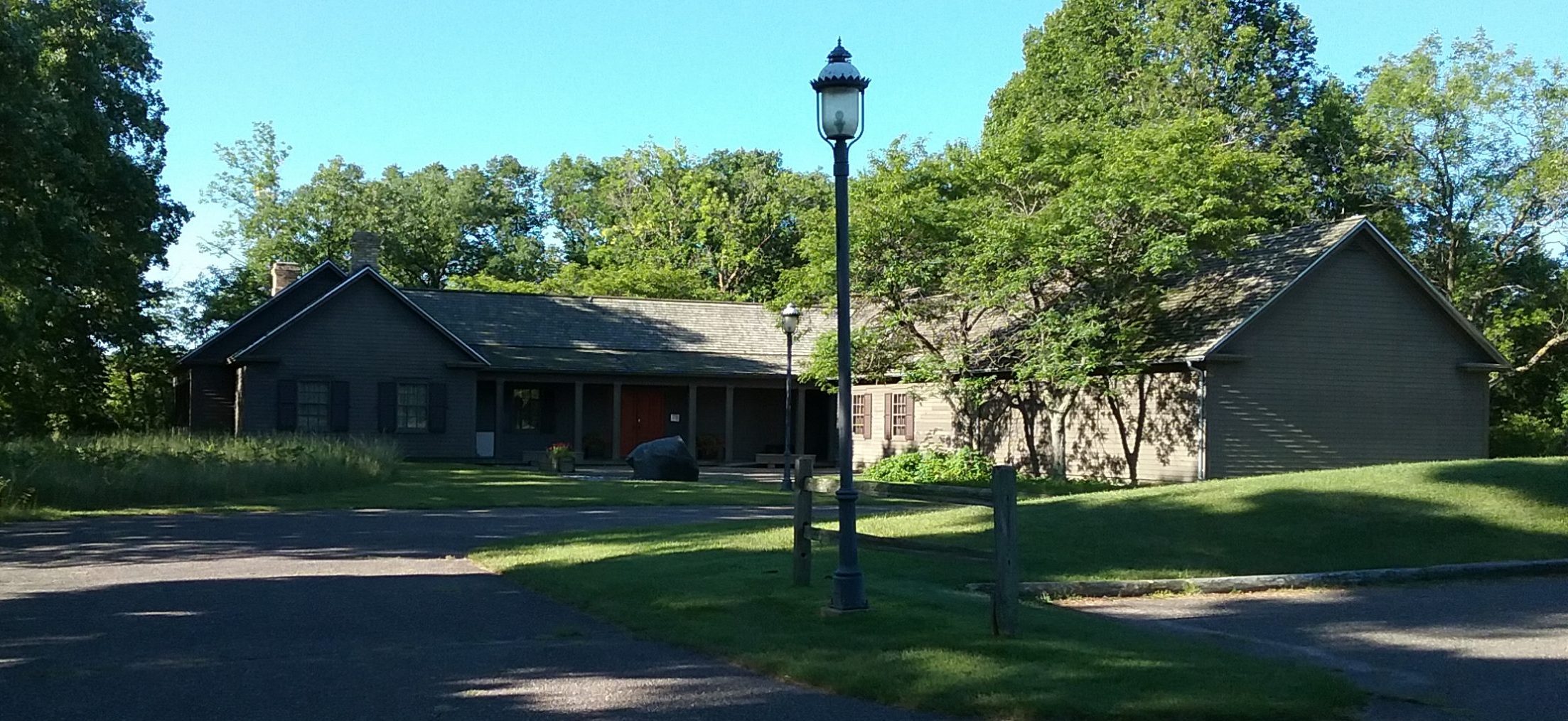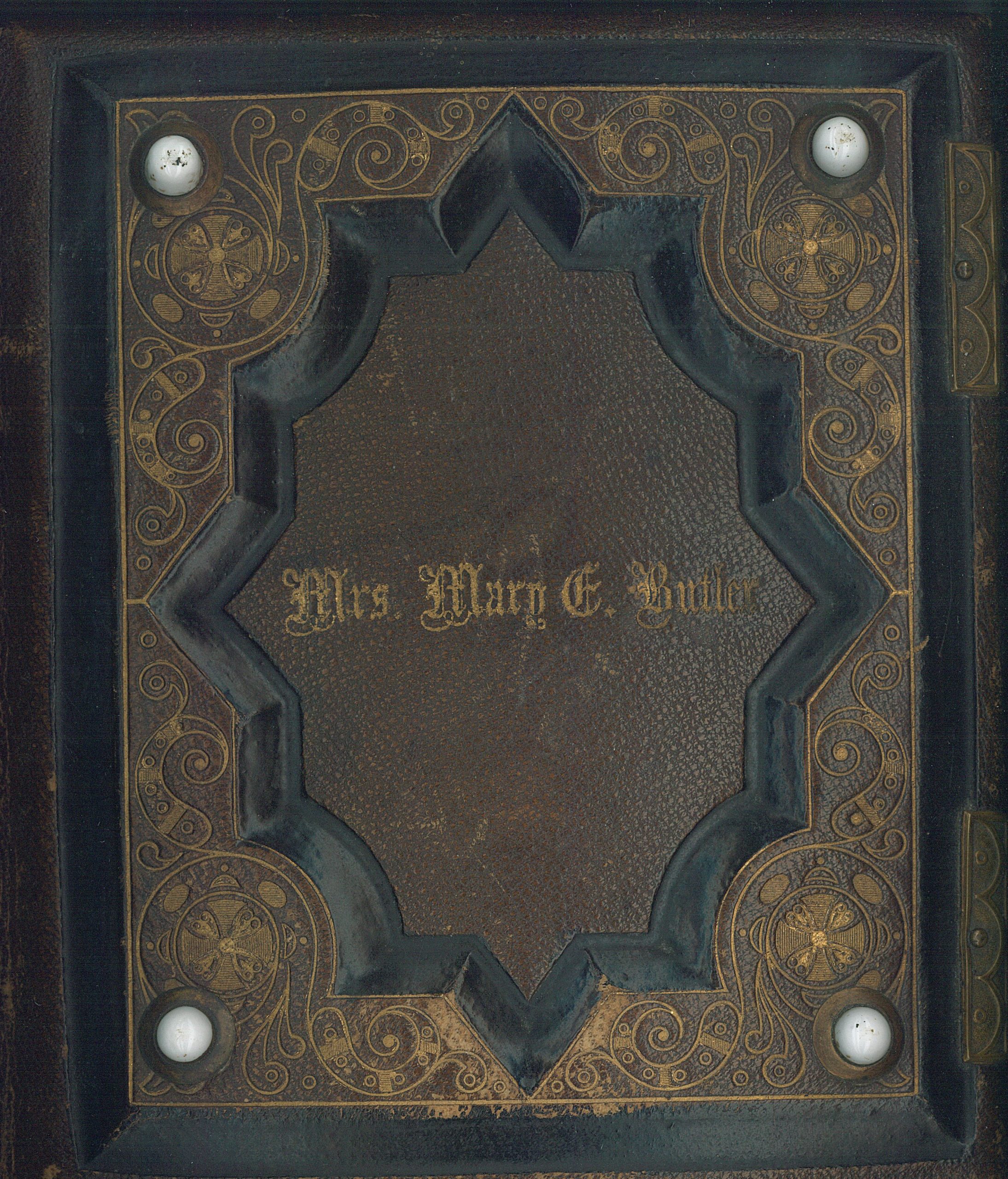If you’re anything like me, then I’m sure your home is full of photo albums. If not whole albums, then you undoubtedly have some pictures that you cherish: memories of your loved ones, births, parties, vacations. Maybe you or some forward-thinking relative wrote an explanation on the back. Maybe you know who the people are, maybe you don’t.
These pictures are an important piece of history, far beyond even the sentimental values of family memories. They give us a realistic view of life in the past, from people of all walks of life. Author Rebecca McNutt states in her novel, Smog City, that “cameras are the world’s first time machines.”
I’m always excited when I get a chance to look through an old photo album. When this particular album was brought to my desk, I became even more excited. The album itself is extravagant, as many others of its time. It is made out of a sturdy leather that has stood the test of time, its pages beautifully gilt with floral embellishments.
The first page inside the album assures the buyer that William W. Harding’s patented Flexible Chain Back Album will not break, allowing long-time protection, but that it is also flexible enough to allow photos to easily be changed. With all pages following still intact and in beautiful condition, it is easy to believe those claims.
What is more important than the album, though, is who filled it. A name is engraved on the cover: Mrs. Mary E. Butler.
William Butler first settled in Little Falls during the spring of 1855 or 1856, making him one of the earliest residents in the town. William worked as a clerk for many businesses, also serving on the first Little Falls City Council.
Butler married Mary E. Holmes and the two had a son, William Butler, Jr.
Of course, the album doesn’t tell us that much upon initial inspection. There are no captions in the album, no notes in the margins, only a small notecard mentioning that it was donated by Mary’s great grandson David. To find that information, I consulted our extensive family files and collection of books on early Morrison County history.
However, photo albums have one luxury that scrapbooks and other more permanent mediums lack. The photos can be removed and replaced. We can examine them without damage to either the photo or the album itself.
In doing this, I was able to find that the backs of a handful of photos had been written on. Two photos even go so far as to give full names and dates. They are portraits of young girls, Emilie and possibly Florence Gravel, dated February 10, 1878. Other names include Mary May Holmes, H.B. Holmes, and children only listed as “Willie, Theodore, and Lonnie.”
What do these pictures tell us about Mary Butler? The Holmes family connection is easy to make—Mary was born a Holmes, and these are clearly relatives.
But what about the Gravel family?
F.X. Gravel ran a flour mill in Gravelville, the town named for his family and the work they had done. This is where the Butler family comes in. William Butler worked as a clerk for F.X. Gravel until the business closed, so it would make sense that their families would be close.
Photo albums can give us an insight into peoples’ lives, their passions, their business dealings. We simply have to know where to look. In this case, we just had to look behind the photos to lead us in the right direction.
~ Grace Duxbury
Museum Assistant
This article first appeared in the Morrison County Historical Society newsletter, Vol. 32, No. 2, 2019.


